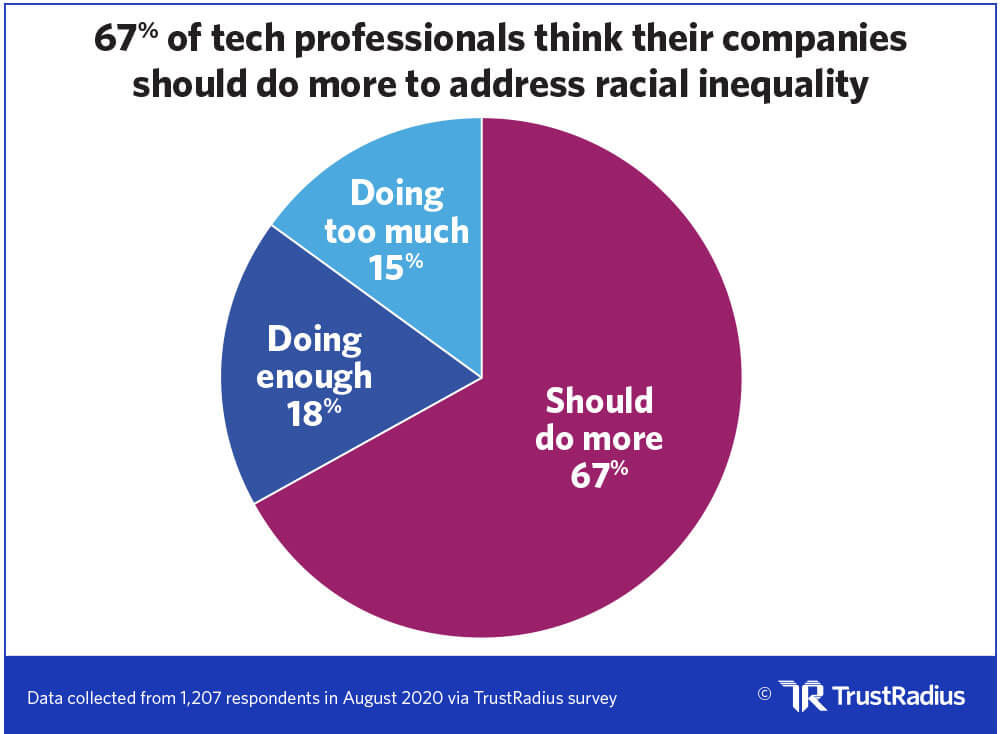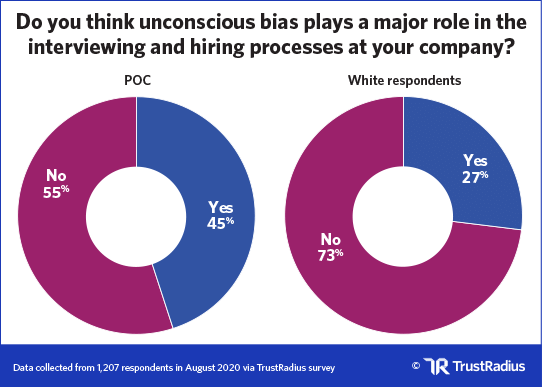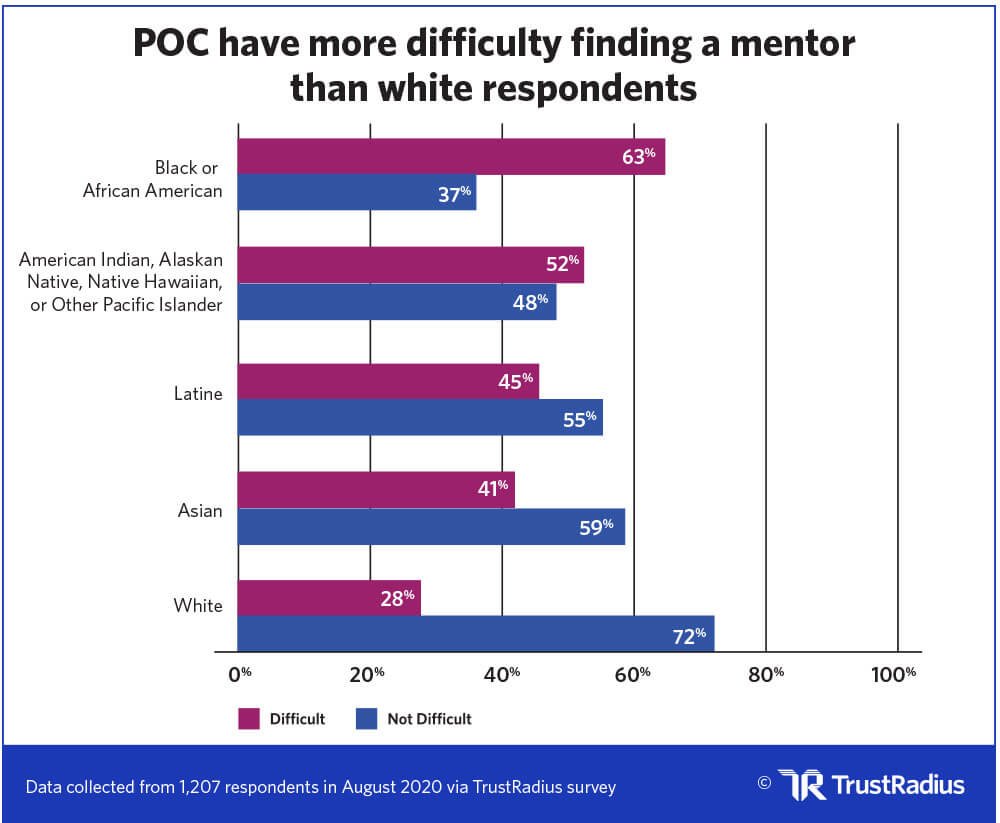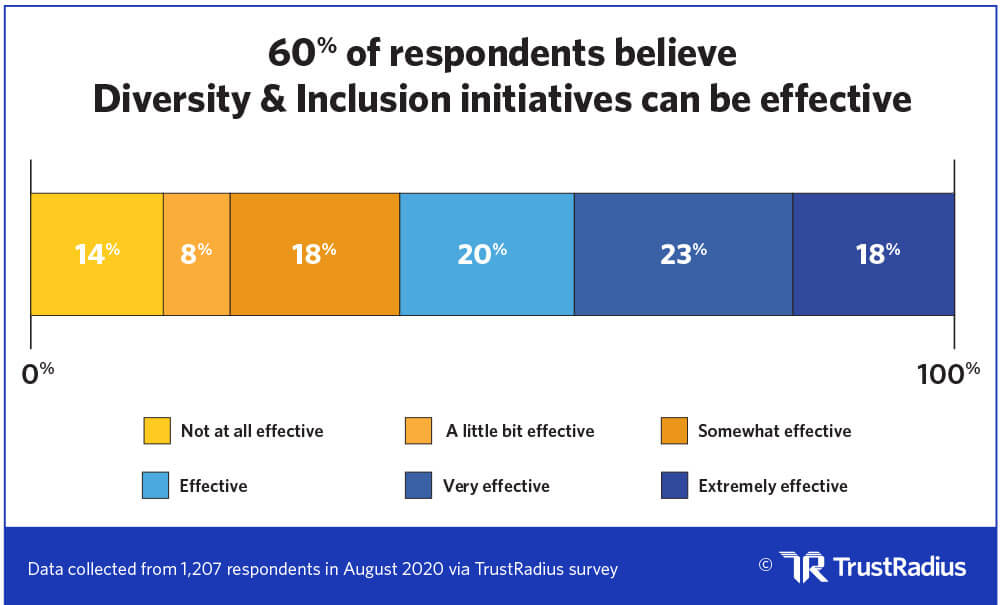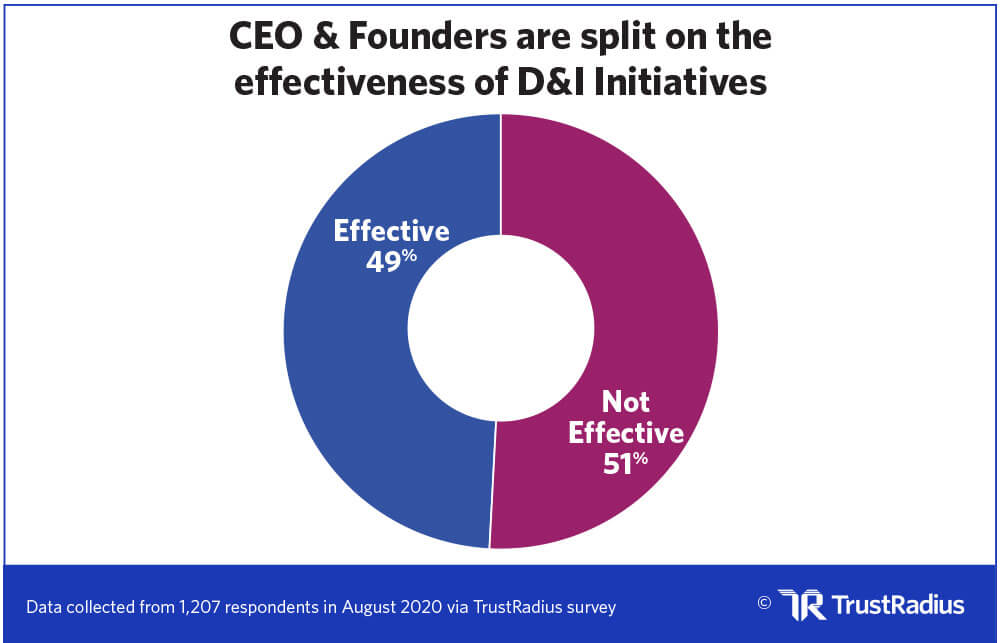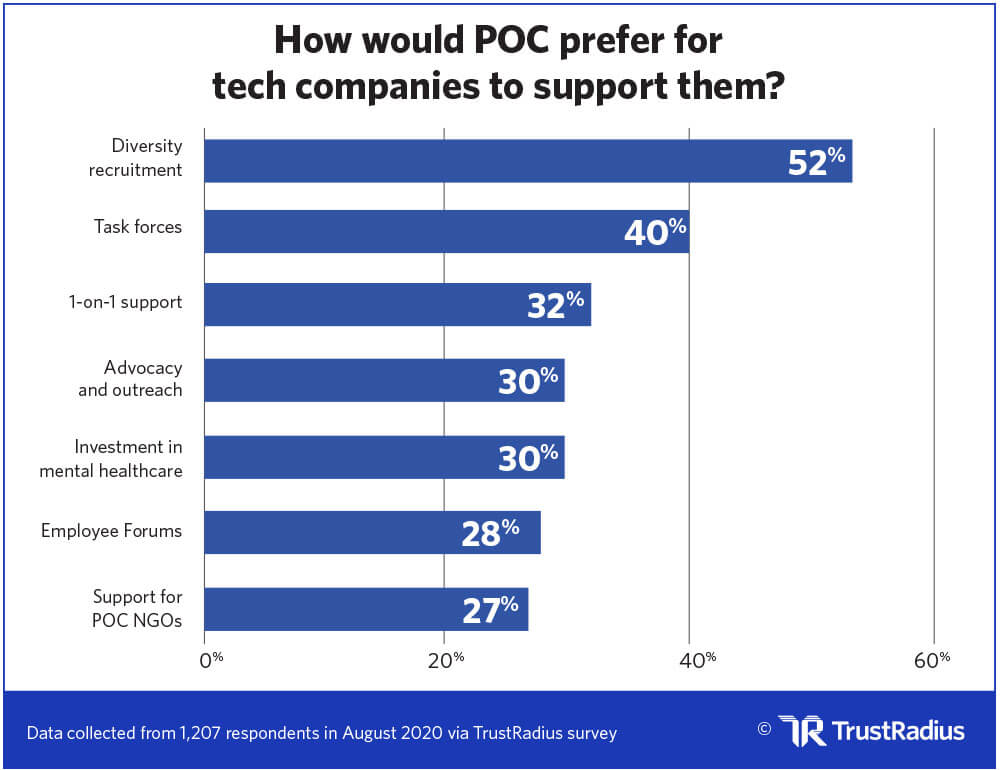The State of Diversity in Tech
Hot on the heels of the 2020 People of Color in Tech Report (PoCiT), TrustRadius CEO Vinay Bhagat hosted The State of Diversity in Tech webinar to continue the conversation around diversity and inclusion. As a company dedicated to transparency and integrity, we wanted to highlight the experiences of marginalized groups in the tech industry.
Vinay met with 3 POC tech leaders to discuss their experience and entrance into the tech industry, practical takeaways for how to address diversity, and our new D&I research for tech. Manny Medina, CEO of Outreach.io; Ezinne Udezue, VP of Product Management for Procore; and Stephanie Herrera, Global VP of Computer Futures’ Salesforce Practice sat down with Vinay to contribute to the global conversations around social inequality and inclusivity.
Below we dive into each leader’s advice and takeaways, and how their experience aligns with data we uncovered in the 2020 People of Color in Tech Report.
Tech Professionals Want Their Employers to Do More
One of our key findings from the PoCiT report was that a majority of tech professionals actually want leaders in the tech industry to do more to combat racial inequality. 67% of tech professionals think companies should do more to address racial inequality.
18% believe that tech is already doing enough, and 15% think tech is doing too much. Vinay mentions that exploring the 15% of tech professionals who think too much is already being done, could be an interesting course of follow-up research to determine just exactly what they think is “too much” in a time where many POC tech professionals feel unconscious bias plays a major role in the interviewing and hiring process at their companies. This is compared to just 27% of white respondents feeling the same.
Before moving to the United States, Vinay personally experienced unconscious bias while starting out on his career in tech. Noticing this, Vinay decided to back up his claims with his own independent audit of the company whose UK branch didn’t hire, but the US branch did. Vinay found that in the UK, hiring managers were more likely to extend offers to candidates with similar educational or recreational backgrounds, excluding qualified candidates who did not. The Society for Human Resource Management published 7 practical ways to reduce bias in your hiring pricing, for tech leaders who are new to this subject, but looking to improve.
POC Struggle to Find Mentors, Access with Non-Traditional Backgrounds
Having a different background from hiring managers can affect candidates more than tech leaders may think. This can range from not attending the same schools, to not even having the same extended network to access job offers. Mentorships are one of the most important ways someone can advance their career in tech. Not having a mentor to provide career coaching advice, or to connect someone with those in hiring positions can impact one’s professional progress.
Stephanie got her start in tech via sales, with only a high school diploma. Despite being extremely capable in her field, Stephanie learned that even with more career experience than some of her peers, others’ salaries were higher simply because they had a college degree. Her story speaks to how implicit bias can impede tech professionals with non-traditional backgrounds, both in pay equity and professional growth.
According to our research, POC have more difficulty finding a mentor than white respondents. Black and Native respondents had the highest reported numbers of difficulty at 62% and 52%. Given their relatively small population within the tech industry, this tracks. However, this also provides an opportunity for allies of all ethnicities, especially white allies, to reach out and provide mentorship services to POC professionals they might not otherwise have in their network.
Ezinne mentioned that she’s been fortunate enough to have allies at every company she’s worked at. However, she also mentioned that she definitely had her detractors. While it’s just as important for allies to be supporters and advocates, it’s also important for everyone in tech to make room for self-reflection, identifying where they may let their own biases influence how they treat their peers and direct reports.
A Majority of Tech Professionals Believe in Diversity & Inclusion
As companies start to embrace Diversity & Inclusion initiatives, it’s important that employees are on board as well. 60% of tech professionals we surveyed believe that D&I initiatives can be effective. As employees create the culture of each workspace, they play just as important of a role in promoting diversity, equity, inclusion, and belonging just as much as their leadership teams.
As a CEO himself, Manny sees diversity & inclusion to be a way for companies to differentiate themselves. He believes in making POC tech professionals feel welcomed at the very start of the interview process. In a sea of companies not doing this, Manny has access to a pipeline of diverse talent that companies without an emphasis on D&I do not.
We acknowledge that tech leadership is largely responsible for setting the tone, and setting clear expectations around D&I. There seems to be a disconnect between employees’ faith in D&I initiatives and that of tech CEOs and founders. Only 49% of tech leaders find D&I initiatives to be effective. A slight majority of 51% didn’t think they were effective at all. With research showing the financial benefits of more diversity and inclusion, tech leaders could be hurting their own bottom lines by losing faith in D&I initiatives.
Ezinne spoke to how repeated microaggressions can have a negative impact on employee performance. When employees are experiencing discrimination at work, it can make them feel isolated and less eager to speak up, and share their ideas. However, she encourages POC in tech to keep pushing forward and lead even when it may be difficult.
We wanted to give tech leadership tangible ways to support POC in the workforce. We asked POC tech professionals how they want to be supported and gave them several examples from which to choose. At 52%, the most popular way was supporting diversity recruitment. Stephanie spoke about how POC want to help others get into tech and want their leaders to be just as passionate about diversifying tech.
Now more than ever before are there more avenues for POC to get into tech. In her work with Computer Futures, Stephanie helps people from non-traditional backgrounds get a break into tech by specializing in Salesforce administration. At Procore, Ezinne is involved in several employee resource groups to help promote diversity and professional growth for women and POC. As leader of Outreach.io, Manny oversees many internal initiatives to make Outreach.io a more equitable company for which to work, and continuously encourages his teams to innovate not only on their product, but within the culture of Outreach. Our guests show that even tech leaders can take a hands-on approach to making tech more equitable for all. It might require rolling up your sleeves and getting uncomfortable, but it’s so worth it.







